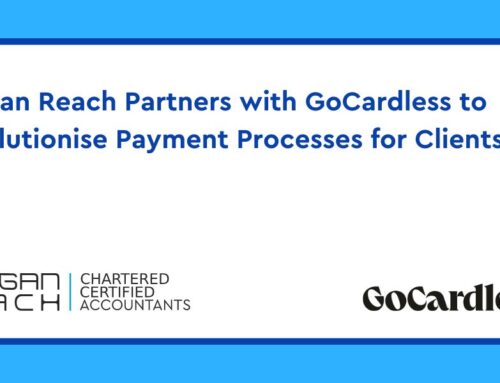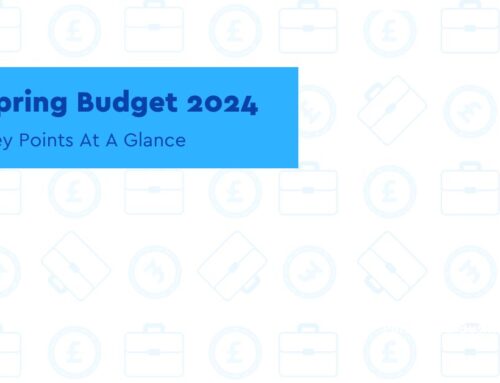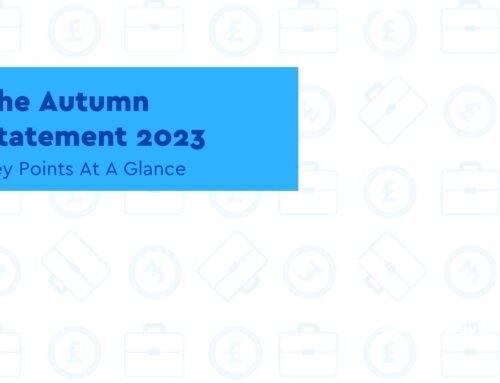Businesses get more time to prepare for digital tax changes
Key Points
- Reformed penalties are also being introduced for Income Tax taxpayers required to use MTD in the tax year beginning in April 2024
- General partnerships will not be required to join MTD for ITSA until the tax year beginning in April 2025
The Government has delayed the introduction of Making Tax Digital for income tax self-assessment (MTD for ITSA) to April 6, 2024 to give individuals and businesses more time to prepare after the challenges they’ve faced during the pandemic.
Financial Secretary Lucy Frazer announced the delay to the House of Commons on September 23, 2021, adding that the Government remains committed to the system designed to simplify the UK tax system.
The basis period reform, which would require unincorporated businesses to align their accounting periods with the tax year, will also be delayed to at least 2024, with a transition year not coming into effect before 2023, Frazer added.
The Institute of Chartered Accountants in England and Wales welcomed the delay, saying the original start date for MTD for ITSA was “far too soon and risked causing serious damage to the UK tax system”.
MTD for Income Tax will now be mandated for businesses and landlords with a business income over £10,000 per annum in the tax year beginning in April 2024.
General partnerships will not be required to join MTD for ITSA until the tax year beginning in April 2025, while the date other types of partnerships will be required to join will be confirmed in the future.
In March 2021, the government announced a new system of penalties for the late filing and late payment of tax for ITSA. The new system for those who are mandated for MTD for ITSA will now come into effect in the tax year beginning in April 2024, and in the tax year beginning in April 2025 for all other ITSA taxpayers.
Eligible businesses and landlords will have the opportunity to gain the benefits of MTD early by signing up to the pilot, which is already underway and will be gradually expanded during the 2022 to 2023 tax year, ready for larger scale testing in the 2023 to 2024 tax year.
What is MTD for Income Tax Self-Assessment?
Under the requirements of MTD for ITSA, individuals who are subject to income tax on the profits of their trade, profession, vocation or property business will be required to keep their accounting records electronically (either using suitable software or on spreadsheet) and file quarterly returns to HMRC with details of their income and expenditure together with any other information that HMRC specifies.
A final end of period statement will then be submitted after the tax year to complete the individual’s tax affairs.
Although the frequency of reporting is to change, the timing of tax payments will not and the current system of payments on account and balancing payment by January 31 after the tax year is currently expected to remain in place.
Exemptions from MTD for Income Tax Self-Assessment
Income threshold
In order to be within scope, the individual must have total business or property income above £10,000 per year.
The threshold of £10,000 applies to gross income or turnover, not profit, and we understand that it applies to the total gross income where the individual or entity has more than one trade or property business. For example, if the individual has £6,000 of rental income and £7,000 of sales from a sole trader or partnership business, they will exceed the limit and be in scope.
Digital exclusion
In line with the exemptions for MTD for VAT, individuals should not have to follow the MTD for Income tax rules if any of the following apply:
- It’s not reasonably practicable for them to use digital tools to keep their business records or submit quarterly returns due to age, disability, remoteness of location or any other reason (often referred to as ‘digital exclusion’).
- They are subject to an insolvency procedure.
- The business is run entirely by practising members of a religious society or order whose beliefs are incompatible with using electronic communications or keeping electronic records.
OTS publishes report on tax year end change
Key Points
- For the tax year to align with the calendar year and end on December 31 would be “intuitive and logical”, the OTS added
- The costs of change are significant, both in terms of the financial cost and the opportunity cost
The Office for Tax Simplification (OTS) has published an analysis of the advantages and disadvantages of a change to the date of the end of the tax year for individuals.
The 70-page review considers the implications of moving the tax year to December 31 and March 31.
Moving the end of the tax year to 31 March would help people understand the tax reporting process, and given how many businesses already use March 31 as the cut off date for accounting, HMRC may as well formalise the date as the tax year end, the report said.
For the tax year to align with the calendar year and end on December 31 would be “intuitive and logical”, the OTS added, and bring the UK in line with the international community which typically uses the end of the calendar year as the tax year end.
A change would require a large amount of work to amend the vast amount of tax legislation that assumes April 5 to be the tax year end, while any transition period would have to be carefully considered with taxpayers in mind, the report highlighted.
Bill Dodwell, OTS Tax Director said:
“There would be clear advantages from having a different tax year end date, but as the transitional costs and impacts are significant, it would require detailed advance planning. If the government were to make a change, it would also be important to ensure the timing did not derail existing change programmes such as work on the Single Customer Account.
“So, while we do not consider such a change should take place in the immediate future, it is not too early to start some long-term planning if the government were to consider taking this forward.
“In the short-term, we recommend government and HMRC focus on arrangements to allow self-employed taxpayers and individual landlords to use 31 March in place of 5 April when reporting their income, to facilitate Making Tax Digital for Income Tax.”
Summary findings (as published on gov.uk)
There are clear benefits in adopting a tax year which is either aligned with the calendar year or with a calendar month-end, especially given the increasing automation, internet-enabled commerce and digitisation of financial information and accounting systems generally.
The costs of change are significant, both in terms of the financial cost and the opportunity cost. Whether moving to 31 March or 31 December, the work involved would consume government and private sector resources and make it much harder to implement other changes at the same time. A move to 31 December could also require changing the UK’s financial year.
The review did not aim to make a specific recommendation about whether such a change should be made. Instead, the report presents information and analysis about the issues involved to inform evaluation of any potential change, and its timing.
A tax year aligned to the calendar year would be the natural, simplest and easiest approach for everyone to understand. It would align with the approach in many other countries and support improvements in the use of international data to help taxpayers in fulfilling their obligations. It would also help individuals who move internationally (and, where relevant, their employers), or who have overseas income.
Moving to 31 March would also be much more understandable, align with the UK’s financial year, and assist taxpayers who prepare business accounts or report income from investments.
The systems impacts of such a change, for government and the private sector, could be comparable with those for a change to 31 December, but the overall scale of what would be involved in a change to 31 March would be lower.
The OTS considers that any change would be best carried out after major projects such as the Single Customer Account have been completed. It would in any case not be feasible to change the tax year end date before the scheduled 5 April 2023 start date of Making Tax Digital for Income Tax.
While the OTS does not consider such a change should take place in the immediate future, the OTS recommends that in the short-term the government and HMRC pursue ways to formalise arrangements to allow (or even require) taxpayers to use a 31 March cut off to stand in for 5 April in respect of the calculation of profits from self-employment and from property income, ahead of the implementation of Making Tax Digital for Income Tax.
Registration of self-employed reverts to pre-COVID process
Key Points
- During the pandemic, face-to-face interviews were suspended for individuals applying for a NI number
- All new registrations as self-employed should use form CWF1 to register as self-employed
HMRC has confirmed that the normal process for registering as self-employed has been restored.
Taxpayers who could not obtain a national insurance number during the pandemic used a workaround and now need to contact HMRC to arrange collection of Class 2 national insurance contributions.
During the coronavirus pandemic the Department for Work and Pensions suspended face-to-face interviews for individuals applying for a national insurance number (NINO).
Applications to register as self-employed with HMRC usually require a NINO. HMRC introduced a temporary workaround to allow those who were unable to obtain a NINO to register as self-employed.
HMRC advised those affected to complete form SA1 rather than a CWF1. The SA1 registered them for self assessment, but not as self-employed for national insurance purposes.
It was always understood that once the individual had obtained their NINO they would need to contact HMRC to update their record and to arrange collection of Class 2 national insurance contributions.
In its latest Agent Update, published on September 15, HMRC advised that following the reintroduction of face-to-face interviews by the DWP:
- All new registrations as self-employed should use form CWF1 to register as self-employed, and
- Any taxpayer who registered as self-employed using the SA1 form should contact the National Insurance helpline to arrange collection of Class 2 National Insurance contributions.
Additional support for businesses on new plastic packaging tax
Key Points
- Announced at Budget 2018, the plastic packaging tax will come into force on April 1, 2022
- The tax applies to packaging that contains more plastic by weight than any other single material
HMRC has published additional support for businesses that manufacture and import packaging to help them understand whether they need to register and are liable for the plastic packaging tax from April 2022.
Announced at Budget 2018, the plastic packaging tax will come into force on 1 April 2022 and apply at a rate of £200 per metric tonne for UK businesses that manufacture or import 10 tonnes of plastic packaging over 12 months.
The tax applies to packaging that contains more plastic by weight than any other single material and the definition of plastic includes biodegradable and compostable plastics. However, packaging that contains at least 30% recycled plastic is exempt.
In an update to existing guidance on the new tax, HMRC has provided greater clarity on when a packaging component is finished. This is important because in the case of manufacturing in the UK it is the business that completes the “last substantial modification” before it is packed and filled that is liable for the tax.
If a business imports a finished plastic packaging component into the UK (including importing packaging that already contains goods), the importing business is liable for the tax.
Section 2.4 of the guidance, now provides a non-exhaustive list of examples of the kinds of manufacturing processes that qualify as a substantial modification, including extrusion, moulding and printing. It also confirms that the last substantial modification would be one that makes a “significant change to the nature of the packaging component”, either by altering its shape, thickness, weight or structure.
The new guidance also provides examples of manufacturing processes that are not considered a “substantial modification” under the legislation, such as cutting individual plastic trays from a larger pre-formed sheet.
Alongside updating its online guidance HMRC has published two decision trees for businesses that remain unsure as to whether they are liable to pay the tax. The first enables businesses to check whether the packaging they manufacture, or import, is in scope and the second checks whether they are liable to and need to register for the tax.
Businesses may need to register for the tax and keep records on packaging manufacture and import, even if they are ultimately not liable to pay any tax (for example, because the packaging contains at least 30% recycled plastic or is exempt for any other reason).
HMRC’s guidance confirms that businesses that import or manufacture less than the 10-tonne threshold will also be subject to record-keeping requirements to evidence that they have not breached the 10-tonne threshold.
Primary legislation for the plastic packaging tax is Finance Act 2021 (ss 42-85 and Schs 9-15), however, secondary legislation will also be enacted and further guidance will be published in due course. Draft statutory instruments were issued for consultation on 20 July 2021 to refine the categories of products that are plastic packaging components and the meaning of substantial modification. Therefore, the guidance may change again to reflect the evolving definitions.
Weekly HMRC, Gov’t and tax updates
Many medium-sized businesses delay adopting new IR35 rules
More than half of mid-sized businesses do not have a formal process in place to track off-payroll workers, according to new research released by BDO.
The findings reveal that 55% of business leaders are using contract workers but will worry about IR35 when business is back to normal after the pandemic.
HMRC has said there will be a so-called soft landing in the first year for those who do not comply with the new rules, but that a taskforce will soon be launched to clamp down on tax avoidance.
The IR35 changes force companies treat self-employed contractors as employees for tax purposes, without having to provide standard employment rights such as statutory sick, maternity and redundancy pay.
Employees can request home working from day one in job
Every employee in Great Britain will be given the right to request flexible working – regardless of time served – under government plans to modernise the way we work.
The proposals consider whether limiting an employee’s application for flexible working to one per year continues to represent the best balance between individual and business needs. The consultation also looks at cutting the current 3-month period an employer has to consider any request.
If an employer cannot accommodate a request, as can be the case, they would need to think about what alternatives they could offer – for example, if they couldn’t change their employee’s hours on all working days, they could consider making the change for certain days instead.
Government to lower salary threshold for student loan repayments
The government is planning to lower the salary level at which graduates start repaying student loans, according to reports.
At the moment, graduates do not start paying back their student loans until their salary reaches £27,295.
However, chancellor Rishi Sunak wants to reduce this threshold to as low as £23,000 in a bid to save the Treasury money, the Financial Times said.
This was the level recommended in the Augar review of post-18 education in 2019. The move would save the Treasury just under £2bn a year, according to the Institute for Fiscal Studies. The National Union of Students (NUS) said it was “totally opposed” to the plans.
The government is also considering cutting the cap on annual tuition fees from £9,250 to £7,500, another recommendation from the Augar review, the FT reported.
Get In Touch
At Morgan Reach, we understand every business needs a little help now and again-especially when it comes to the financial side of things. Therefore, to help our clients and visitors we endeavour to cover as much of the business news as possible. If you are self-employed or run a business and need assistance and advice on how these news could make a difference to you or your business, feel free to get in touch with the experts at Morgan Reach. Our business growth experts at Morgan Reach will guide you through what support is available for you or your business as well as the latest news that may affect you.







